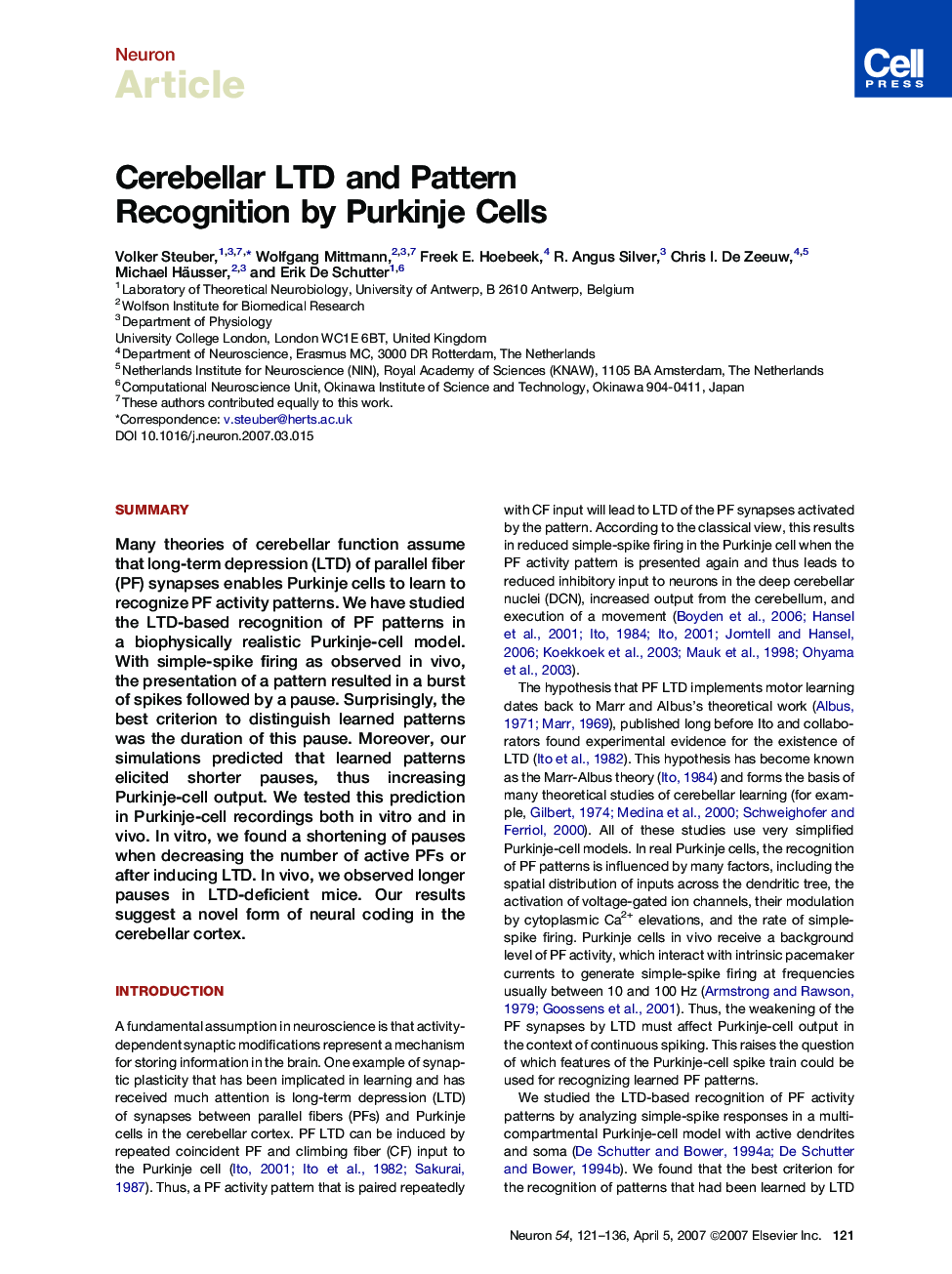| Article ID | Journal | Published Year | Pages | File Type |
|---|---|---|---|---|
| 4322674 | Neuron | 2007 | 16 Pages |
SummaryMany theories of cerebellar function assume that long-term depression (LTD) of parallel fiber (PF) synapses enables Purkinje cells to learn to recognize PF activity patterns. We have studied the LTD-based recognition of PF patterns in a biophysically realistic Purkinje-cell model. With simple-spike firing as observed in vivo, the presentation of a pattern resulted in a burst of spikes followed by a pause. Surprisingly, the best criterion to distinguish learned patterns was the duration of this pause. Moreover, our simulations predicted that learned patterns elicited shorter pauses, thus increasing Purkinje-cell output. We tested this prediction in Purkinje-cell recordings both in vitro and in vivo. In vitro, we found a shortening of pauses when decreasing the number of active PFs or after inducing LTD. In vivo, we observed longer pauses in LTD-deficient mice. Our results suggest a novel form of neural coding in the cerebellar cortex.
